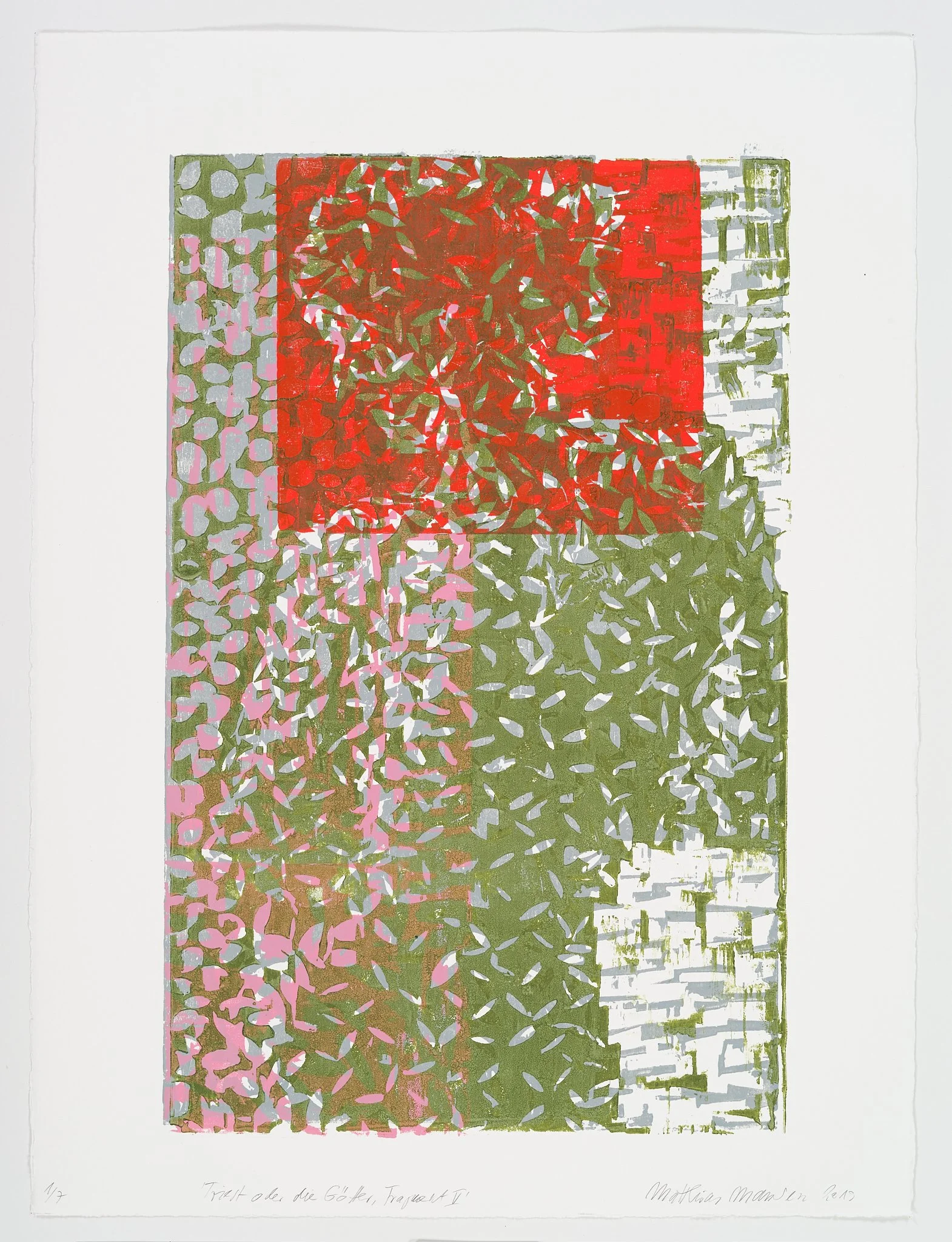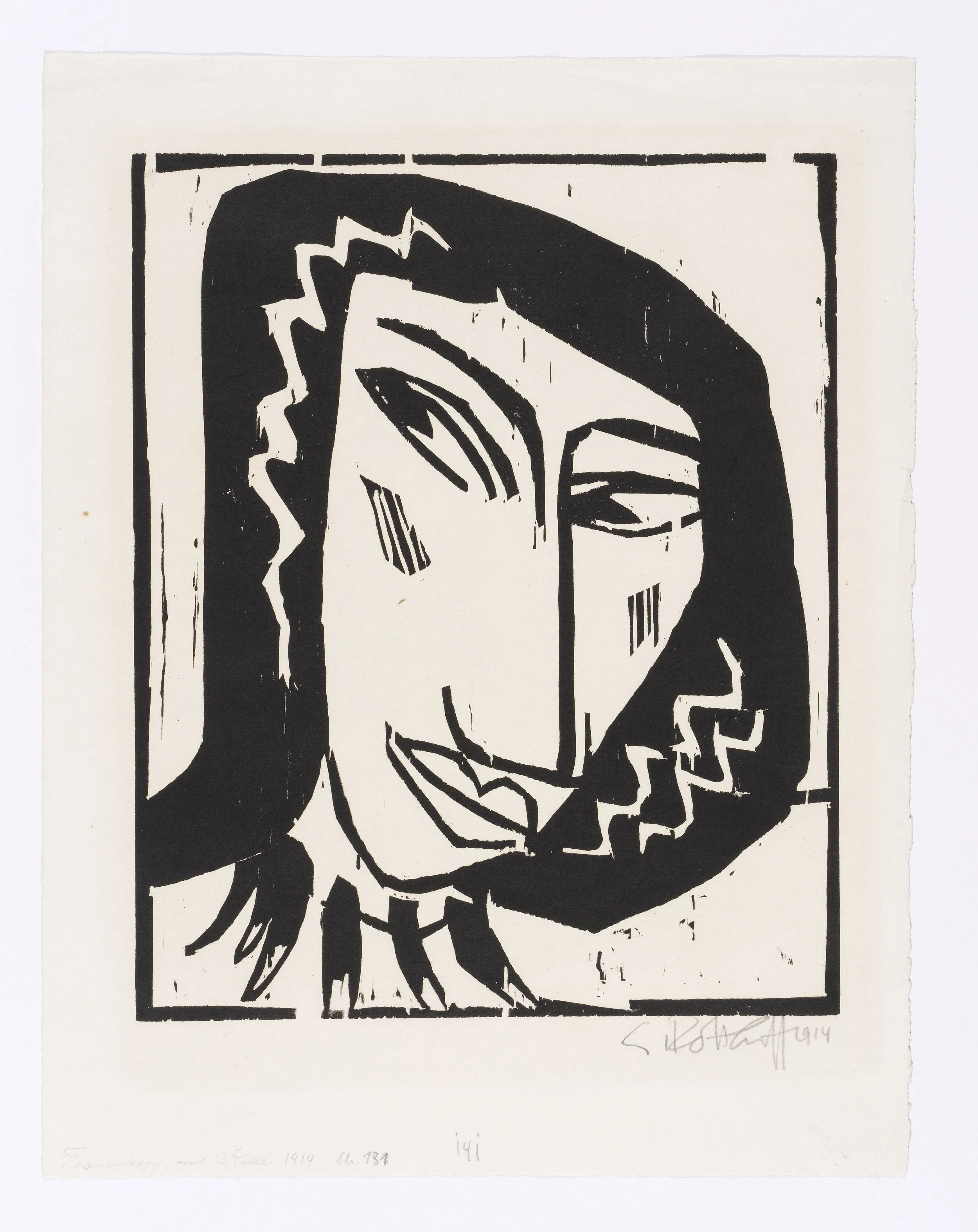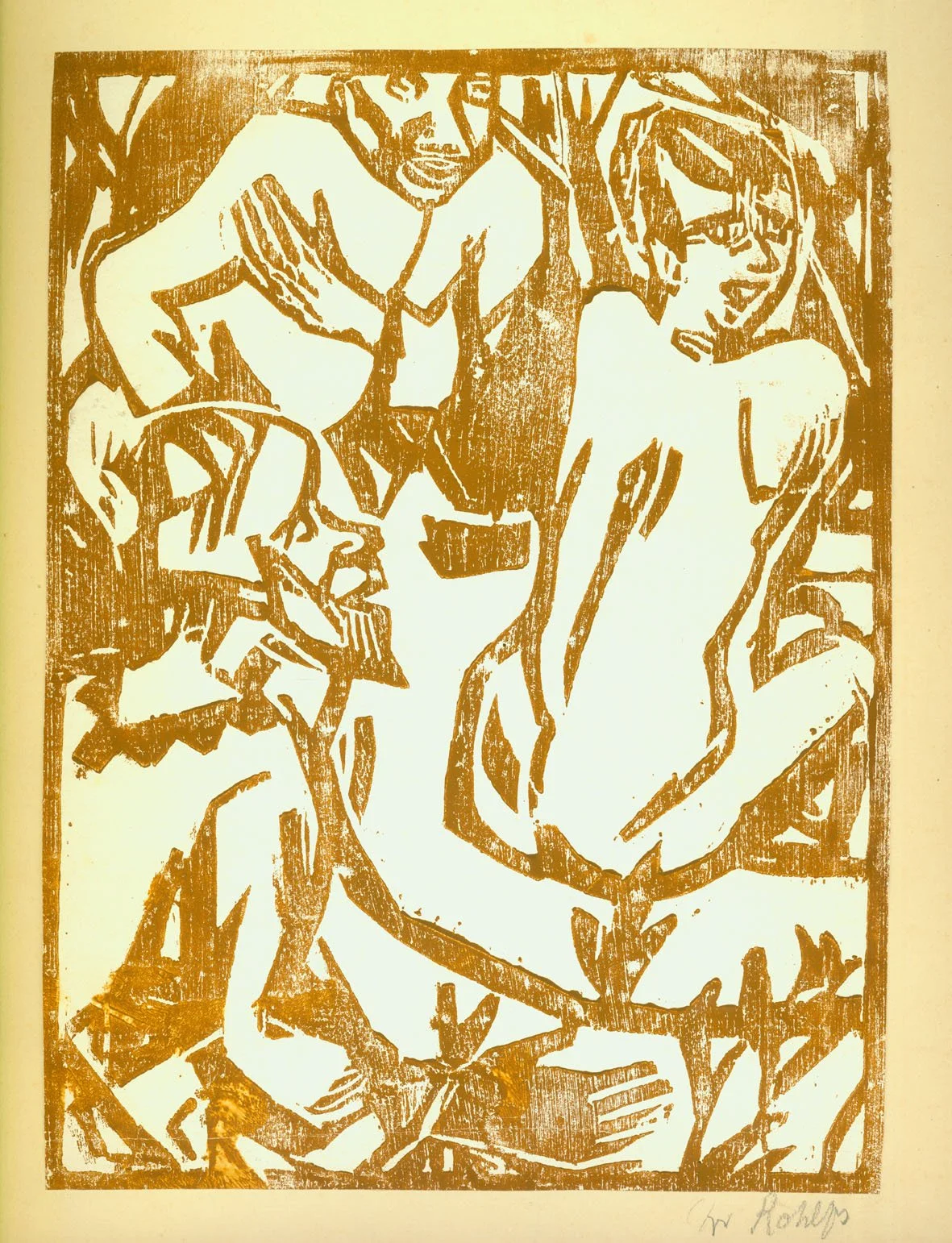Woodcut May 2025
Masters of Woodcut
Woodcut, one of the oldest and most elemental printmaking techniques, continues to captivate with its immediacy, expressive power, and formal clarity. Whether in the early 20th century or today, artists such as Erich Heckel, Emil Nolde, Christian Rohlfs, Karl Schmidt-Rottluff, Christiane Baumgartner, and Matthias Mansen demonstrate the medium's remarkable diversity and timeless relevance.
What unites them is a sensitivity to reduction and abstraction, a passion for experimentation, and a direct engagement with both material and subject. Woodcut demands strength and precision, intuition, and a clear visual concept—often resulting in works created spontaneously, without preparatory drawing, through freehand cutting.
At its core, the technique thrives on contrasts: between light and dark, surface and line, tradition and innovation. Artists embrace woodcut not merely as a technique, but as an expression of artistic identity—shaped by personal style, craftsmanship, and a commitment to forging new visual languages.
Matthias Mansen
Badende in Gedanken
Color woodcut and monotype, 2021
660 x 500 mm
€ 2.800.-
Matthias Mansen, born in 1958 in Ravensburg, lives and works in Berlin and is best known for his woodcuts. Major international museums hold extensive collections of his work.
The exhibition “Trieste or the Gods” at the Kunstmuseum Singen presents his eponymous series (2018–2022), inspired by a summer journey to Trieste. Depictions of bathing figures, reminiscent of classical sculptures, evoke associations with the Golden Age.
This series is embedded within a retrospective that traces Mansen’s artistic development from 1983 to the present. Accompanied by a publication, the exhibition fulfills the museum’s long-standing wish to introduce Mansen's work comprehensively to the German-Swiss public.
Fragment V
Color woodcut. 2019.
760 x 560 cm
€ 1.800.-
Karl Schmidt-Rottluff
Kopf mit Halskette
Woodcut, 1914
Schapire H 131
363 x 295 mm
€ 18,000
Karl Schmidt-Rottluff realizes his expressionistic ideas most uncompromisingly in the medium of woodcut. Within the BRÜCKE group, he is considered the most original and direct artist. For his works, he predominantly prefers the strikingly grained spruce wood, though he also uses the softer, less structured aspen or the easily worked lime wood—materials that suit his reduced, powerful visual language.
For coloring, he uses black printing inks in various densities—watercolor, paste, or varnish colors—that differ in their transparency, allowing for diverse, often surprising printing effects.
Until 1912, Schmidt-Rottluff prints his woodcuts by hand, usually in very small editions of no more than ten copies. Each print differs—sometimes by chance, sometimes intentionally—due to the varying use of his palm or a bone folder. It is only from 1913 onwards that he occasionally allows hand presses, like the Pann press, to do the printing. Even then, editions rarely exceed 30 copies per motif.
Christian Rohlfs
Susanna im Bade
Woodcut. 1916/17.
Utermann 145; Vogt 102
350 x 252 mm
€ 3,800
Christian Rohlfs was a lifelong experimental artist, constantly searching for new forms of expression. His woodcuts almost always carry a distinct character of uniqueness: He individually painted the woodblocks with a brush and almost exclusively printed them by hand—one by one. He used various types of paper, which gave each print a unique, unmistakable aura.
In 1904, Rohlfs met the Norwegian Edvard Munch in Weimar, and a year later, in Soest, he encountered Emil Nolde, who, like him, hailed from northern Germany. These meetings likely sparked his first intense engagement with printmaking—particularly woodcut.
Erich Heckel
Kniende am Stein
Woodcut. 1913/14.
Ebner/Gabelmann 589 H a A (from B)
500 x 312 mm
€ 12,000
As early as 1903, even before the founding of the artist group Die Brücke, Erich Heckel began to immerse himself deeply in the technique of woodcut.
In his early works, the influence of Félix Vallotton is clearly evident, with Heckel adopting and further developing the stylistic features of the French artist. He also drew significant inspiration from Edvard Munch, particularly Munch’s technique of sawing the woodblock to create multi-colored prints.
Around 1913, Heckel’s graphic techniques expanded: depth of space and perspective became much more pronounced. At the same time, the depiction of the human body gained complexity. The newly acquired depth in the pictorial space seems to symbolically reflect an expansion of the artist’s inner expressive possibilities.
Christiane Baumgartner
Pfad
Woodcut. 2003.
320 x 520 mm
€ 2,500
The work Path presents a blurred, almost cinematic view of a street or a path—a motif that suggests movement and time. Baumgartner transfers digitally manipulated video stills into the traditional medium of woodcut, creating a compelling connection between the old and the new. The coarse grid of the print contrasts with the fleeting impression of the image. This tension is characteristic of her work.
Baumgartner is one of the leading figures of the New Leipzig School, a movement known for its fusion of classical techniques with contemporary themes. Path is exemplary of her artistic approach: media-reflective, reduced, and at the same time deeply poetic.
Emil Nolde
Tändelei
Woodcut. 1917.
Schiefler/Mosel H 134 II (von III)
310 x 230 mm
€ 30.000.-
Emil Nolde was first inspired to explore woodcut printing in 1906 by the artists of the "Brücke" group. After a hiatus of several years, he returned to the technique in 1910 while in Hamburg. A decisive impulse in Nolde's artistic development came from his journey to the South Seas in 1913–14, which allowed him to engage directly with the art and culture of Indigenous peoples.
His 1917 work Tändelei illustrates Nolde's pursuit of reduction and focus on the essential—hallmarks of his woodcut style. The piece reflects both his fascination with the expressive power of non-European art and his deep interest in the human figure—an attitude he shared with the artists of the "Brücke".
What was new in Nolde’s approach was his deliberate engagement with the physical qualities of the woodblock: he made use of its natural grain, cracks, splits, irregularities, and limitations, actively incorporating them into his artistic expression.






